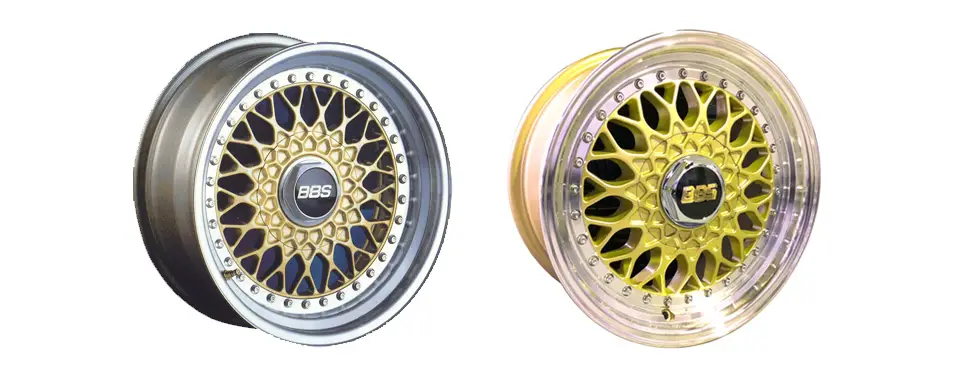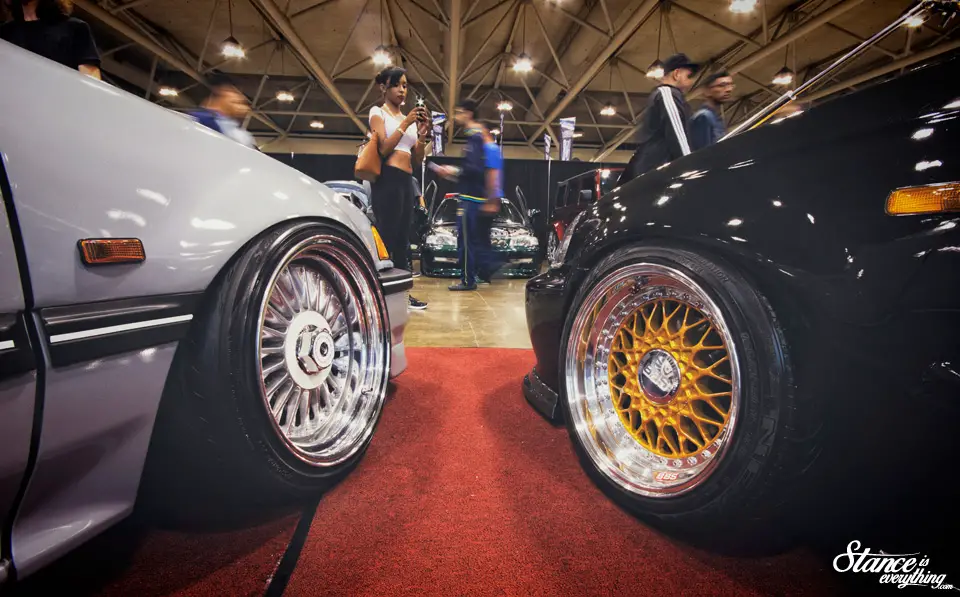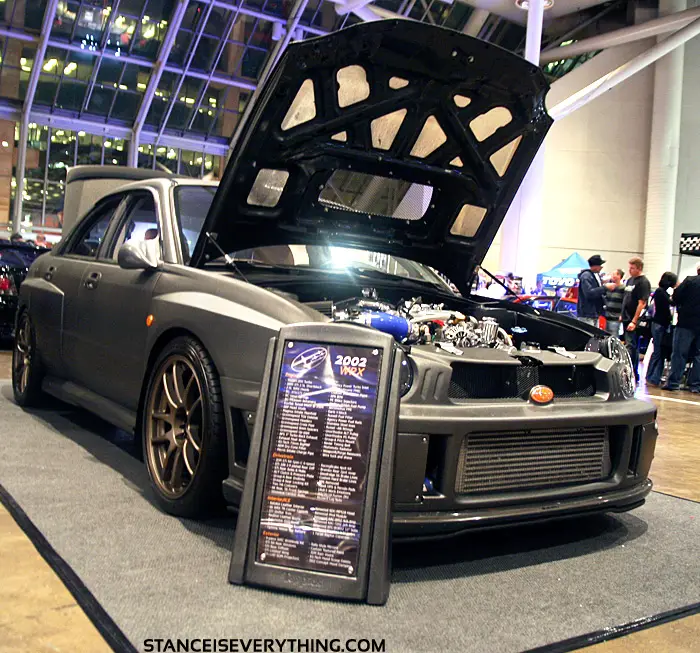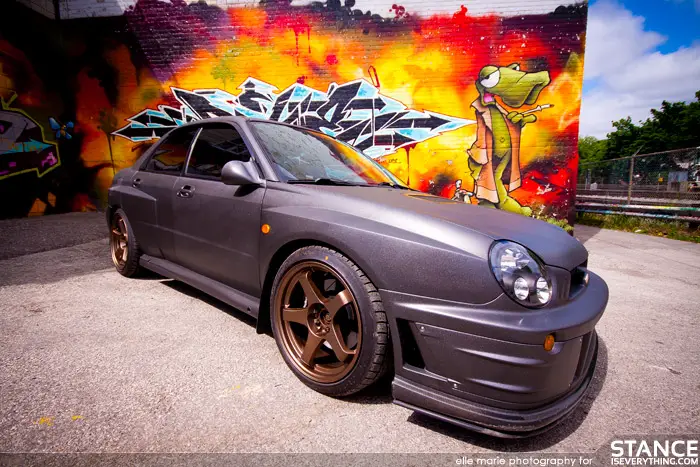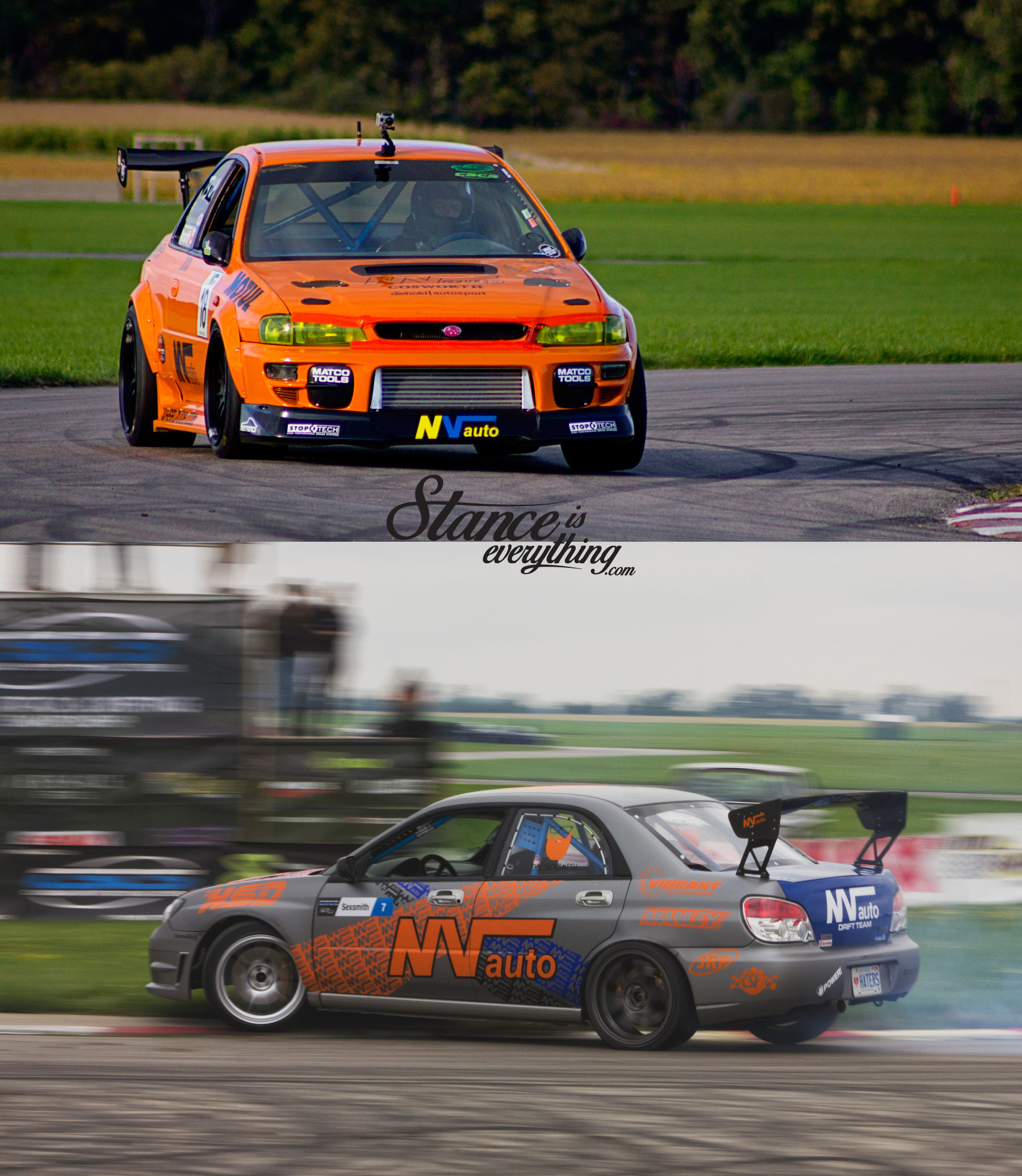The ‘fake’ wheel v. ‘real’ wheel debate is a conversation that knows no end. It has been going on long before this site started, and is likely to continue long after I stop updating.
Over the years I’ve been asked my position several times, and aside from a few ‘off the record’ comments I’ve offered little in the way of an opinion. However the more condescending, accusatory, and judgemental, the collective voice campaigning for ‘real’ wheels becomes, the more I feel the need to voice some inconsistencies I’ve noticed in the stalemate as a whole.
First even just breaking the discussion down into ‘fake’ vs ‘real’ is an oversimplification because within the ‘fake’ definition exist two unique subsets; counterfeits and replicas. While the dictionary definition of those words is nearly identical, in this context the two words can describe significantly different things.
Counterfeit wheels leverage an established brand aesthetic in order to sell what is more often than not a wildly inferior product. Using deceptively similar stamping, coloring, stickering, and badging these brands fraudulently try to pass themselves off as the real deal hoping no one will be the wiser. In short these brands are faking the funk and I won’t argue that they don’t deserve all the criticisms they receive.
Replica wheels on the other hand are a different, more complicated, breed because while it’s clear these wheels are modeled after existing designs, they actually don’t attempt to represent their offerings as any brand other than their own.
Take for example the largely criticized brand XXR and their 521 wheel. Yes perhaps a more passive enthusiast might be fooled, but for the most part anyone who knows what an authentic LM looks like isn’t going to mistake an XXR for one.

While it’s blatantly obvious that without the BBS LM the 521 wouldn’t exist, side by side the two wheels are actually disgustingly different. The spokes are similar to one another, but the XXRs appear to have a thinner profile over all and extend further into the lip. Additionally the lug holes are slightly offset from the spokes on the XXR, and the faux rivets are in completely different locations (in relation to the spokes) when compared to the assembly bolts of the BBS.
Likely these changes were made by XXR to avoid a trip to the court room but, to play devil’s advocate; what if the designer of the 521 was genuinely inspired by the BBS LM?
No design today is done in a vacuum, and a few designers I have spoken to have confessed that it is very hard to produce a truly original wheel design. I mean look at the BBS LM when compared to the CCW LM20, the name alone practically implies where CCW got the inspiration for their different, yet familiar design.
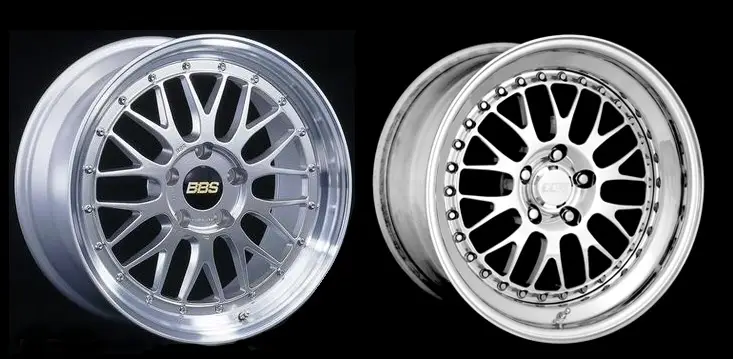
Consider an entirely different example below, in the top left we have the original Speedline produced Ferrari F40 wheel while through the rest of the image we have similar wheels produced by a variety of brands.
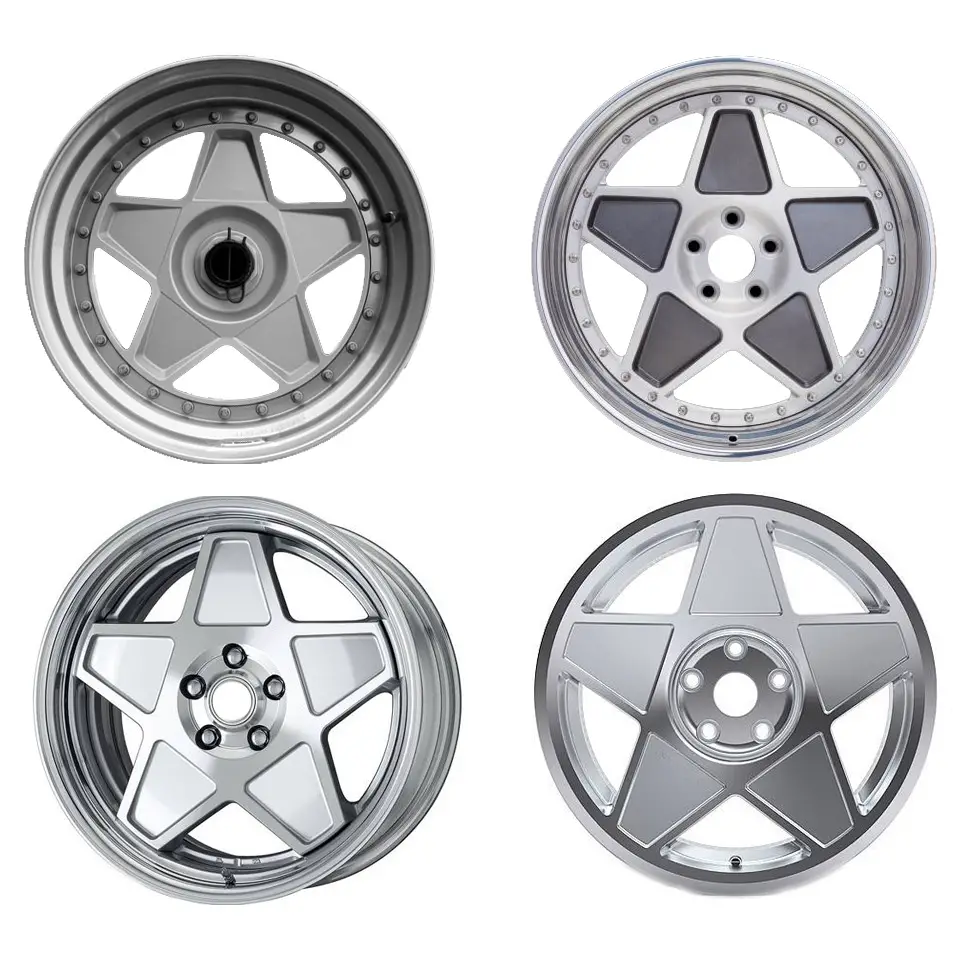
Moving through the examples each wheel gets further away from the original in terms of design, but it’s not a stretch by any means to trace them back to the shoes of everyone’s favorite poster car. Like many replica companies these wheels –none of which are made by companies people identify as ‘fake’ manufacturers– come in sizing, configurations, and finishes the original Speedline wheel never did making them much more accessible and versatile. They are also sold at a significantly cheaper price than you could find a used Ferrari wheel for.
Where do the lines between homage, inspiration, and copy exist?
It seems that the brand on the center cap wildly changes people’s opinion of right and wrong. XXR, Rota, Konig, or Fast yield an immediate response of fake, while seemingly blind eyes are turned towards any brand currently accepted as ‘real’.
A bit of a double standard no? Why in some cases are these similarities are considered intellectual theft and in others it is simply the nature of the business? Pushing aside marketing, social standing and other intangible qualities the most significant dividing factor seems to be build quality. If the company in question is putting out a product that is on par, or better than the original than people view design similarities as tolerable.
The thing is more affordable alternatives of popular products exist in every market, not just the wheel industry, and the exact purpose of these replica products is to appeal to customers who can’t afford, or simply can’t justify the cost, of the more expensive alternative. The easiest way for a manufacturer to bring down the final retail price is to use a different manufacturing process than the real deal.
Arguing that the manufacturing methods used by some of these lower priced companies is on par with that of the more prestigious brands would be silly but, it could reasonably be argued that their production methods are perhaps good enough.
Most people, especially those whose cars don’t see Motorsports competition, would be perfectly fine on a well constructed cast wheel. A big reason that forged modular wheels are so popular today is because, as vain as it may sound, they often just look a lot better than their single piece alternatives.
The fact that these same wheels come with a significantly decreased risk of failure due to rigorous testing is a huge inarguable advantage, but assuming that replica (not counterfeit remember) brands don’t do any testing is quite the reach. At the end of the day no brand wants to be on the hook for a liability lawsuit, especially considering how hard they are to cover up in today’s internet age.
Despite any brands best efforts however failures are still something that can happen.
Several years ago a friend of mine custom ordered a set of authentic Work Emotion CR Kai wheels. About a year after purchase a pothole put a small dent and split in the lip of the wheel that prevented it from holding air. After Work informed him that they no longer warranty or repair cast wheels he bought a full set of Rotas for the cost of one replacement.
To some people this might seem like a monumental step backwards but in this individual’s case the switch made perfect financial sense and to this day the Rota wheel has survived the same roads that sidelined the Work wheel.
Does that make Rota wheels of higher quality than Work? Of course not but situations like this are the exact reason why many people can’t justify running ‘real’ wheels on the street.
This circumstance also calls into question the notion that all ‘fake’ wheels are running on borrowed time and guaranteed to fail.
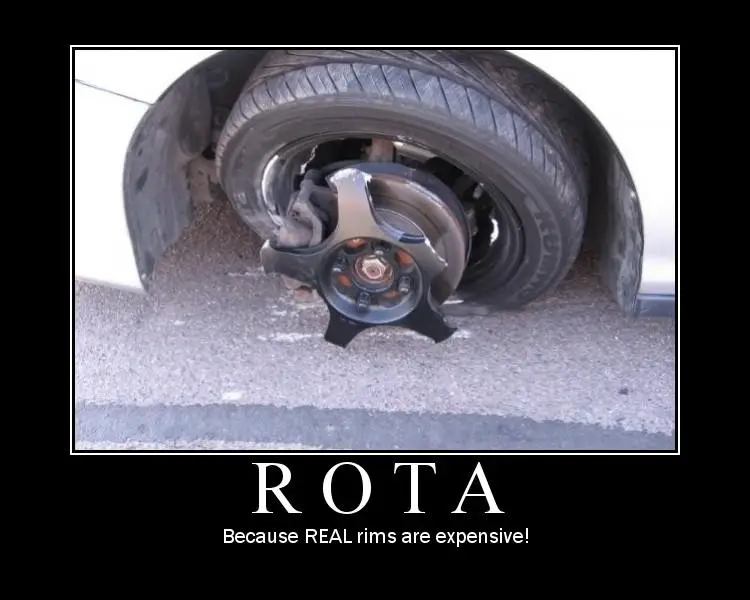
The broken Rota image above is perhaps the go to for people looking to illustrate the potential horrors of replica wheels on and off the track. The problem with this example is that it is completely out of context.
If we applied the same out of context argument, using of a handful of documented failures, to every company producing wheels today few would come out unscathed.
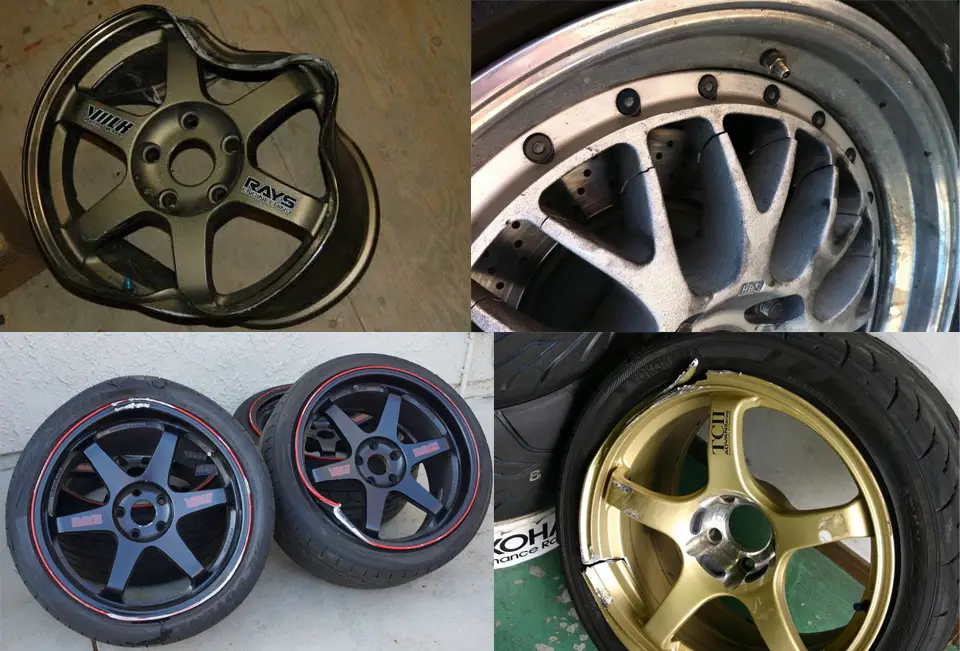
In the world of Motorsports where wheel quality and structural integrity is paramount, there are actually a number of successful participants running replica wheels.
Notable local time attack driver James Houghton (pictured below) raced exclusively on a single set of Rota Slipstream wheels from 2011 to 2014 and these wheels took him to Button Willow and back again without fail. Even tackling famed –and extremely fast– ‘Riverside’ corner that claimed an SSR wheel the same weekend he was there.
Looking locally once again NV Auto’s entire race program is sponsored by Wheel Dude, one of the largest Rota distributors in the USA.
Five years and three different race cars –one Canadian Sport Compact Series Ultimate AWD Championship car, one CSCS Street Class Championship car, and a third place CSCS over all drift car– Dov reports zero failures.
The experiences of two race teams isn’t really enough to base an entire argument around, but poking my head in and out of a few forums I found that by in large, many Motorsports competitors can’t afford to care about the moral stigmas attached running replica wheels.
Racing is an expensive sport, and money trees are thus far fictional, so if a wheel is wide enough to hold decent rubber, light enough not to be a significant detriment, and stout enough to make it through a seasons worth of events than any other considerations are largely irrelevant.
As for the argument that fake wheel manufacturers only steal from the industry and give nothing back to the community, in the first round of the 2015 Formula Drift competition I noticed more than a few drivers received support from these same brands that are chastised everyday.
In fact Long Beach second place finisher Aurimas Bakchis’s 2015 race program is sponsored by STR, a company that walks a line closer to counterfeit than they honestly should.
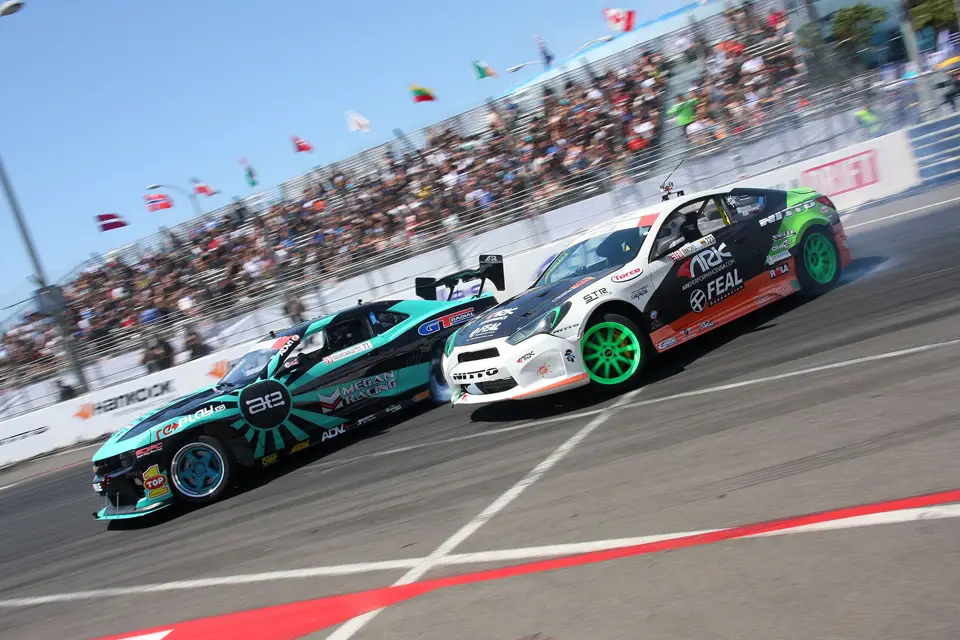
Yes you can say that these companies are only doing it to further push their product, but how does that make them any different from any other wheel company that offers sponsorship? At the end of the day they are putting their marketing dollars out just like everyone else.
This begs the question why don’t more of the ‘real’ companies put their money toward the subset of the automotive market constantly embroiled in the wheel debate? Yes Rotiform and HRE sponsor FD cars but BBS, Rays and Work (as far as I know) are absent.
The replica companies have realized that a lot of their target audience is watching Formula Drift, so if they can prove their wheels can take the abuse of someone in the pro circuit, it speaks volumes about the durability of their affordable alternatives.
If other brands are advocating against replicas, but not justifying themselves at the events these individuals attend, then do they really deserve a piece of that audiences hard-earned pay cheque?
An additional, equally rhetorical, question would be why more brands on either side of the debate don’t follow Enkei’s lead and release affordable original design cast wheels. For companies that have already paid for their tooling an about-face shouldn’t be too difficult. For the companies making modular wheels, outsourcing their cast line to someone who knows what they are doing should be equally achievable to help boost their bottom line and get more people running their product.
At the end of day every time I try to examine this debate critically I’m just left with more questions than answers and that is really my whole point to this entire post.
While it would be incredibly simple to live by a black and white philosophy of ‘real’ wheels good ‘fake’ wheels bad there exists a lot of middle ground. Simply ignoring the double standards, exceptions, and endless variables involved in the discussion just because the kool-aid being served is particularly flavorful is completely ludicrous.
Make your own choices, do your research, look used (which has always been my method of choice), consider new upstart brands, and ultimately make your wheel choices based on what best serves you, not the judgemental keyboard warrior miles away.
